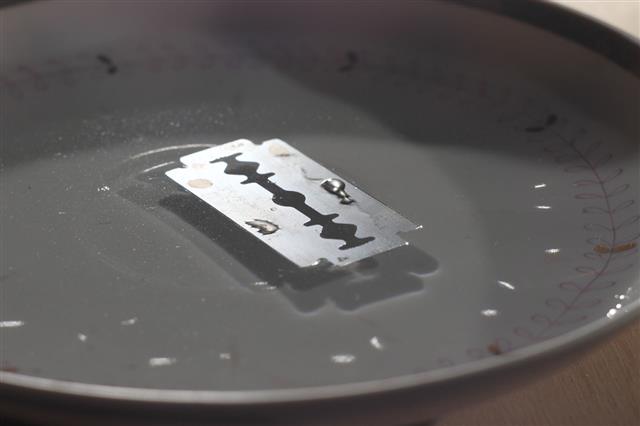
Surface tension is a physical phenomenon that we observe in our daily life. Raindrops take a spherical shape. ‘tears of wine’ are seen in a glass on pouring an alcoholic beverage in it, formation of spherical soap bubbles – all these are examples of surface tension.
Quick Fact
Surface tension in water arises from high interactions between water molecules, known as hydrogen bonding. As the value of surface tension of water is high, water has a high boiling point.
The force of attraction between like molecules in a liquid lends it a tendency to contract at the surface. Hence, the surface is said to be under ‘tension’. Surface tension is the property of a liquid surface to resist external force. It is the reason why the surface of a water body looks like a stretched membrane. Surface tension causes ‘capillary action’, due to which water travels through the stems of plants, and blood flows through the small vessels in our body. Following are the basic concepts about molecular forces that we need to know before understanding surface tension.
● Cohesive forces are intermolecular forces between similar molecules. For example, the force of attraction between two water molecules is cohesion.
● Adhesive forces are intermolecular forces between dissimilar molecules. The force of attraction between a water molecule and air is adhesion.
● Range of molecular forces is the maximum distance up to which intermolecular forces are effective.
● A sphere drawn with the molecule as the center and the range of molecular forces as the radius is known as the sphere of influence.
● Surface film is the layer of surface of liquid whose thickness is equal to the range of molecular forces of attraction of the molecules at the surface.
What is Surface Tension?

Consider the molecules A, B, C of a liquid (let us say, water) as shown in the adjoining figure. Molecule A is well inside the water, B is at the surface film (R), and C is on the surface. The sphere of influence of molecule A is totally inside the liquid. Hence, it is acted upon with an equal and opposite cohesive force from the remaining molecules. Therefore, the net force acting on molecule A is zero.
A part of the sphere of influence of molecule B is above the surface of the water. Hence, adhesive forces from air molecules act on molecule B. Due to this, the cohesive forces from molecules below and around B pull it down. Thus, the net unbalanced downward resultant cohesive forces pull molecule B down in the water.
Half of the sphere of influence of molecule C lies in the water, while the other half is in the air. The cohesive forces act against the adhesive forces, and C is pulled inside due to the resultant unbalanced cohesive force.
Due to these cohesive forces, the surface area of the liquid reduces. Thus, surface tension can also be defined as the force per unit area necessary to expand the surface of a liquid.
Practical Applications
Apart from mercury, water has the greatest surface tension of any liquid. Let us take a look at some examples of surface tension of water.
● Water striders are insects that can walk on the surface of water because of surface tension of water
● Mosquito eggs can float on water because of its surface tension. Kerosene is sprayed on water so that the mosquito eggs sink and the breeding stops.
● Warm water is used for washing purpose as heating increases the surface area and reduces surface tension. This action is replicated by adding detergents to cold water.
● A needle placed on water can be made to float due to the surface tension of water. If the surface is ruffled, the needle will quickly sink.
Other Examples of Surface Tension
● The test for jaundice involves the use of surface tension properties. Sulfur powder is sprinkled on the urine sample. If it does not contain bile, the sulfur powder floats due to surface tension. If bile is present in the sample, the surface tension of urine reduces and the sulfur powder sinks.
● Toothpaste contains soap, which reduces the surface tension and helps it spread freely in the mouth.
● Disinfectants have low surface tension, which allow them to spread through cell walls of bacteria.
Surface Tension of Some Liquids
| Liquid | Surface tension (N/m) |
| Water at 20°C | 0.0727 |
| Soapy water(typical) | 0.0370 |
| Mercury at 20°C | 0.4355 |
| Tissue fluids (typical) | 0.050 |
| Glycerin | 0.0631 |
